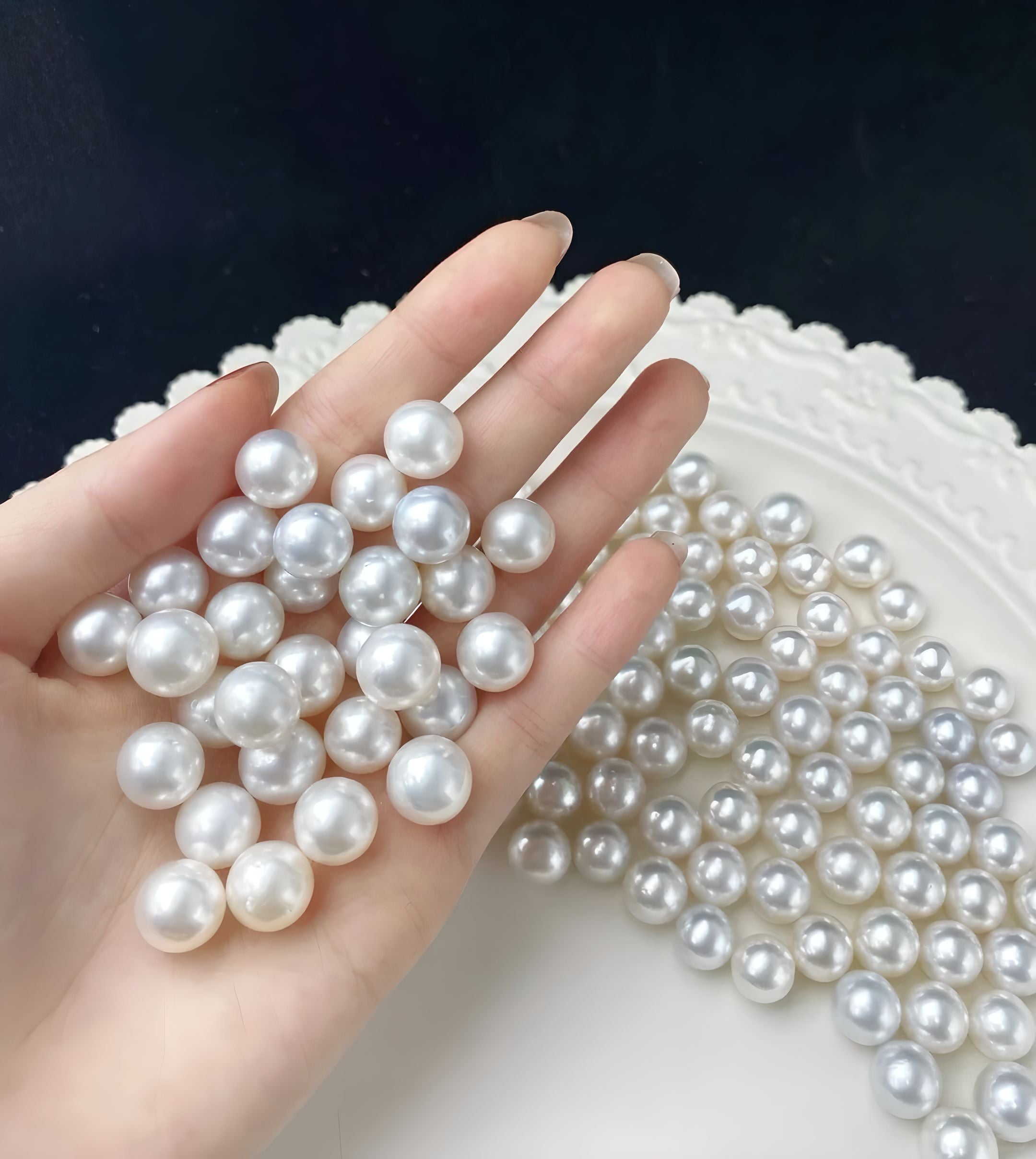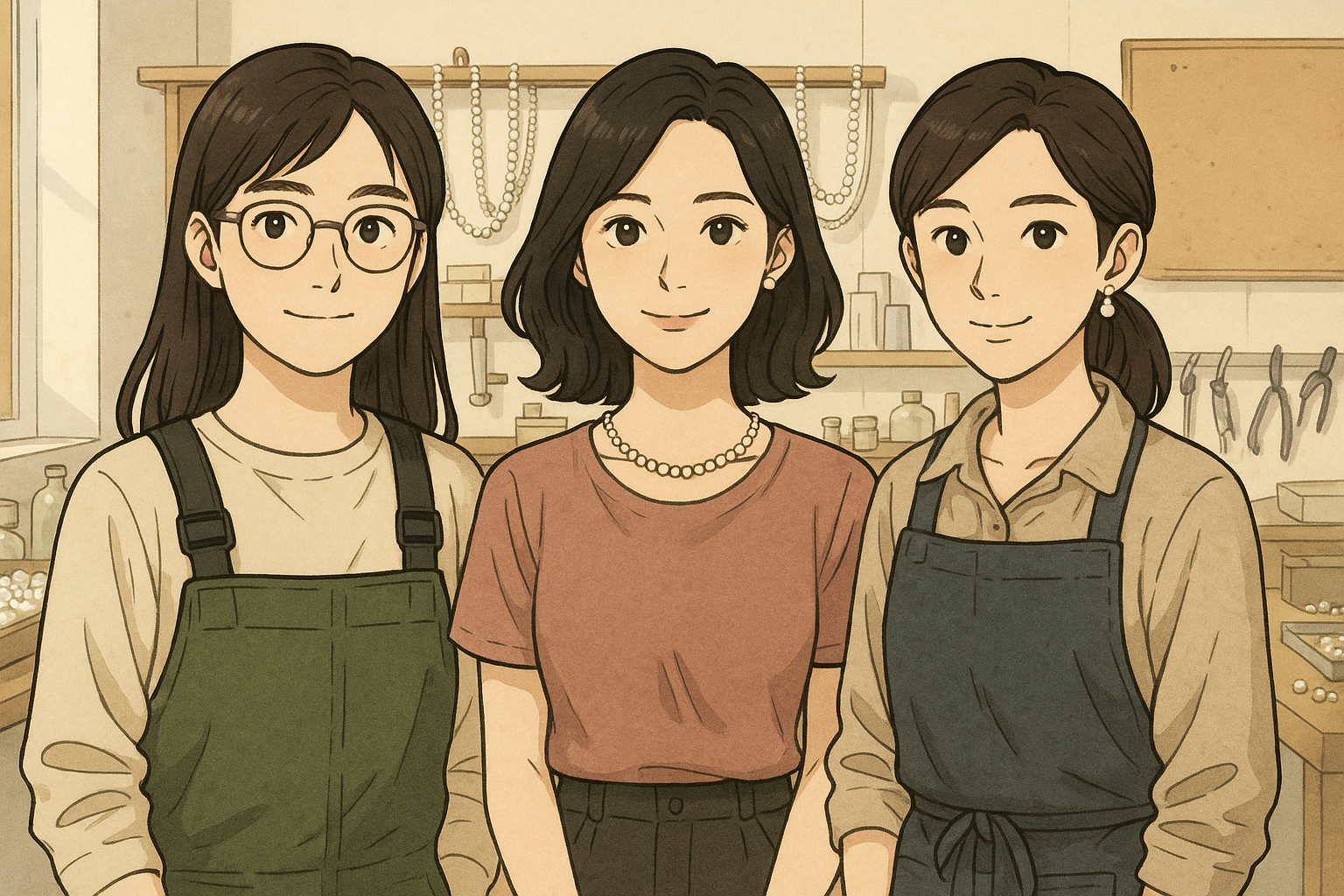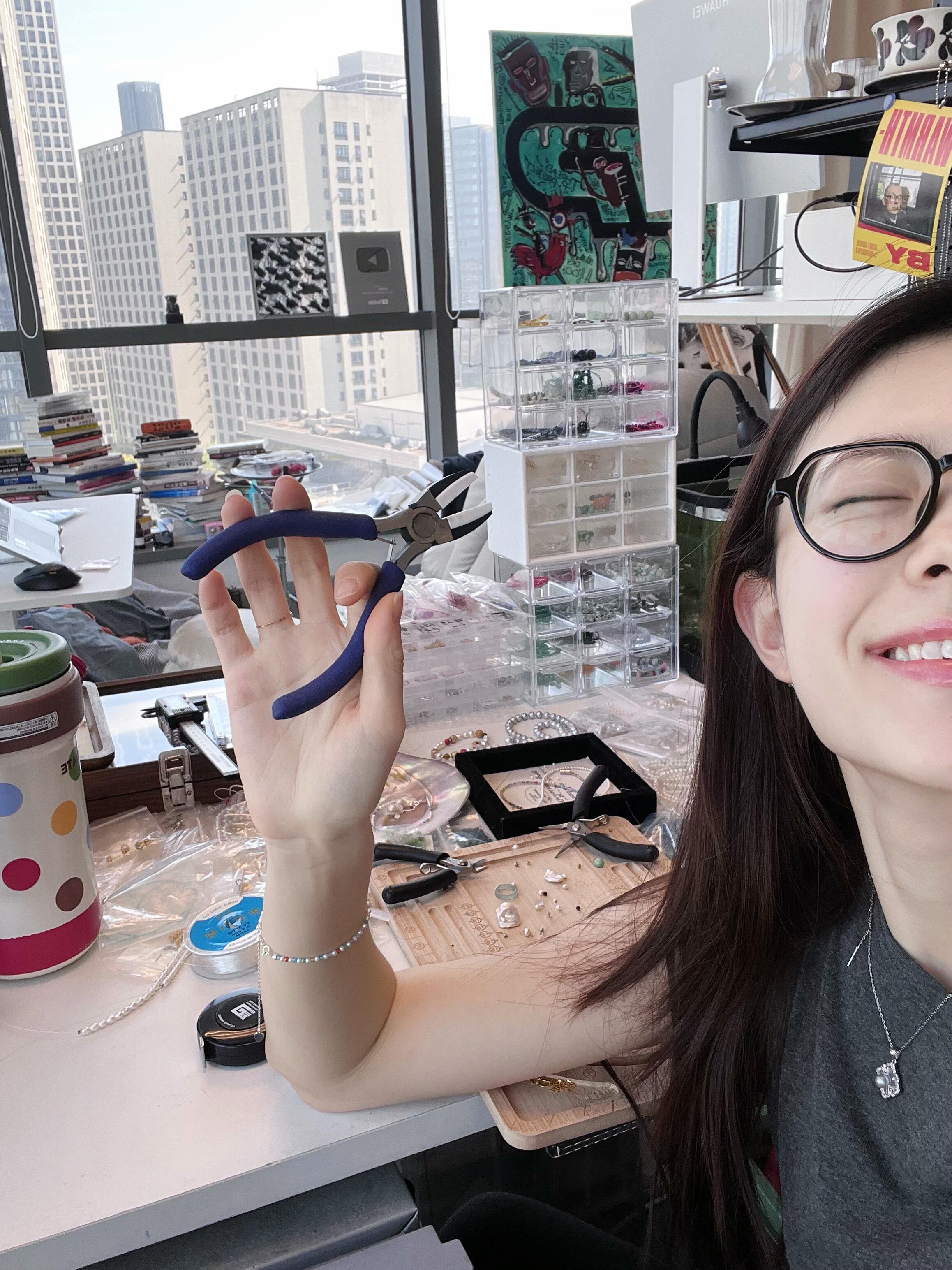
Inside Alya Studio: From Loose Pearl to Fine Jewelry(Part.1)
Inside Our Studio: From Loose Pearl to Fine Jewelry
Every morning begins with light, and trays of pearls.

Everything begins long before a piece of jewelry is born - with the quiet patience of pearl farming.
We nurture young mussels until they grow to the size of a palm, then gently insert a fragment of mantle tissue inside the shell. Over the next two to five years, layer by layer, the pearl takes shape, a patient miracle built by time and care.
(You can read more about that story in our Margaret Jewelry series.)
But here, I want to take you behind the doors of our studio - to see how these pearls begin their new life as jewelry.

Winter, When Pearls Are Harvested
It is October now, the start of winter in the Northern Hemisphere — the season of pearl harvest.
When the water turns cold, pearl oysters slow their growth, and the nacre becomes denser, the luster deeper and brighter.
This is when our work begins.
After harvest, pearls are sent to our main processing facility for cleaning, polishing, and initial grading.
The lower-quality pearls are discarded or ground into powder for traditional medicinal use,
while the better ones — those graded 2A to 5A — are sorted by size, color, and shape using precision sieving machines.
And from there, the story shifts from factory rhythm to human touch.

Step 1: Sorting and Selecting
The next morning, when we walk into the sorting department, the long wooden table is covered with rows of transparent boxes - each holding two to five kilos of pearls.
Under the morning light, they look like bowls of moonlight.
Our sorting team begins their meticulous work, using tweezers to lift pearls as small as 1.5mm, turning them under the light to judge the reflection on each side.
They examine surface flaws, shape, and tone, deciding within seconds where each pearl belongs.
Machines can separate pearls by size, but only the human eye can see what makes one glow a little more than another.
A skilled sorter can sense, without a color card, the subtle gradient between pinkish lavender and deeper purple, or recognize the cool silver sheen that defines a perfect Edison pearl.
Each pearl is judged on four main dimensions:
size, color intensity, shape, and surface perfection.
These decide its grade — and its destiny.
Two pearls of the same size may differ tenfold in value,
simply because one catches the light like a memory and the other does not.
To be continue...

It will be a busy day when we saw all those pairs in the bin...



Leave a comment
This site is protected by hCaptcha and the hCaptcha Privacy Policy and Terms of Service apply.